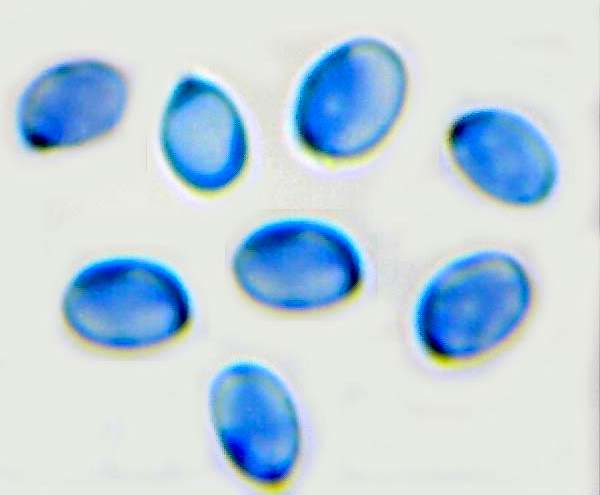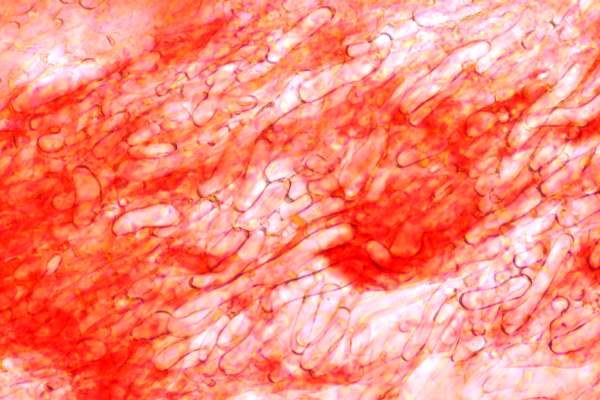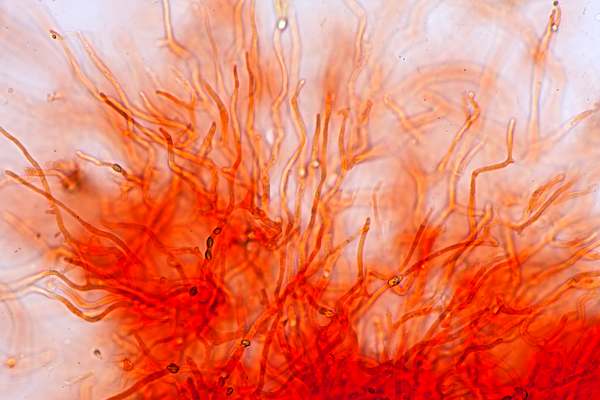Gliophorus irrigatus (Pers.) A.M. Ainsw. & P.M. Kirk - Slimy Waxcap
Phylum: Basidiomycota - Class: Agaricomycetes - Order: Agaricales - Family: Hygrophoraceae
Distribution - Taxonomic History - Etymology - Identification - Culinary Notes - Reference Sources
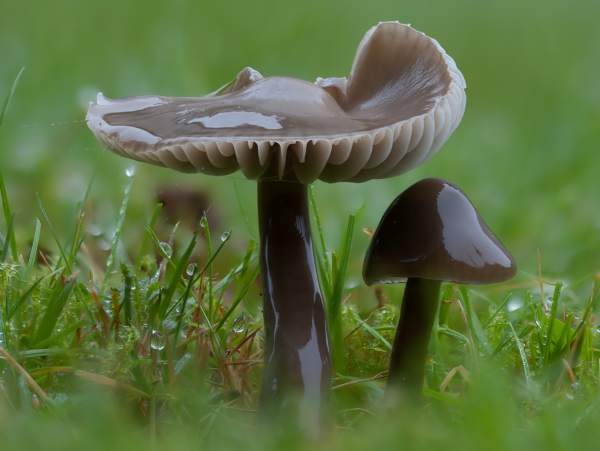
Gliophorus irrigatus (syn. Hygrocybe irrigata and Hygrocybe unguinosa) is a moderately rare waxcap of cropped pasture, churchyards and open woodlands. Until recently better known as Hygrocybe irrigata, the Slimy Waxcap is an autumn and early winter species.
Like so many of the waxcaps, this mushroom is much more common in upland areas of acid soil, but it has also been found in lowland grassland and woodland edge habitats including the chalk downlands of southern England.
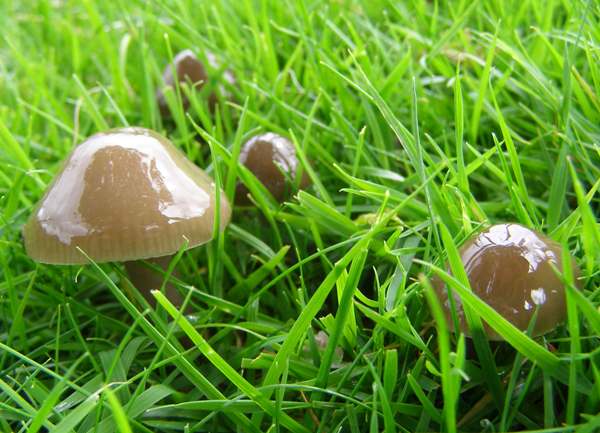
The slimy nature of both the cap and the stem of this macabre meadow mushroom and its brownish colouring make it one of the very few waxcaps that are easy to identify with confidence from field characters alone.
Distribution
Widespread but uncommon to rare across most of Britain and Ireland, the Slimy Waxcap is most often seen in upland areas on acidic soil.
This waxcap is recorded also in some parts of Mainland Europe, where it is an occasional to rare find in most central and northern countries; and this species is also recorded from Asia as well as in Australia. This waxcap also occurs in parts of North America, where it is mainly a woodland species.
Taxonomic history
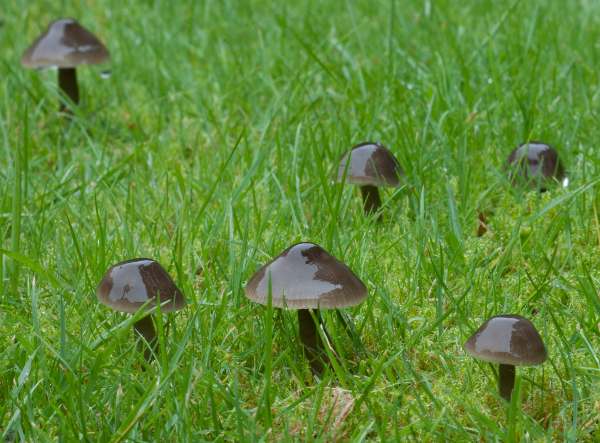
Described scientifically in 1801 by Christiaan Hendrik Persoon, who named it Agaricus irrigatus, the Slimy Waxcap was recorded as Hygrocybe unguinatus in Magnus Elias Fries' Systema Mycologicum of 1821. Fries' name for this interesting rather than beautiful remained the accepted scientific basionym until 1976, when Marcel Bon reinstated Persoon's earlier specific epithet in defining this waxcap under the scientific binomial name Hygrocybe irrigata. In 2013 the current scientific name Gliophorus irrigatus was established by British mycologists Martyn Ainsworth and Paul Kirk.
There are several synonyms of Gliophorus irrigatus including Agaricus irrigatus Pers., Agaricus unguinosus Fr., Hygrophorus irrigatus (Pers.) Fr., Hygrophorus unguinosus (Fr.) Fr., Hygrocybe irrigata (Pers.) Bon, and Hygrocybe unguinosa (Fr.) P. Karst.
Etymology
The genus Gliophorus comes from the from Greek glia-, meaning glue, and the Latin -phorus from the Greek -phoros which means bearing: Gliophorus refers to the glue-like thick liquid that coats the caps, gills and stems of mushrooms in this genus. (Its former genus Hygrocybe is so named because fungi in this group are always very moist: Hygrocybe means 'watery head'.)
The specific epithets irrigata and irrigatus come from Latin adjective irrigatus and refer to the watered or dew-covered (wet and slimy) nature of these waxcaps.
Identification guide
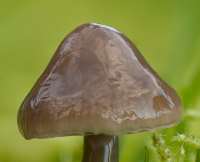 |
CapPale tan or grey-brown; very slimy. Initially bell-shaped, becoming flatter but retaining a broad umbo; colour ranging from dark brown to light grey brown, usually slightly paler towards the margin. Pale striations are visible at the margin. |
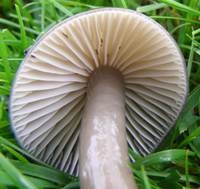 |
GillsWhite, darkening with age; adnate with a decurrent tooth; thick and waxy. StemThe same grey-brown colour as the cap or slightly paler, becoming much paler towards the base; slightly compressed and sometimes with a groove along most of its length; no stem ring; often crooked, as are the stems of many other waxcaps. |
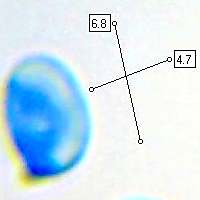 |
SporesEllipsoidal, smooth, 6.5-8 x 4.5-5μm; inamyloid. Spore printWhite. |
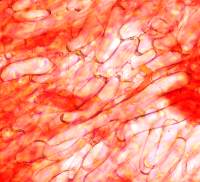 |
Gill tramaSubregular (see left) with hyphal elements up to 140μm in length. |
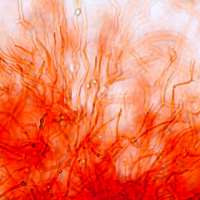 |
Pileipellis (Microscopic cell structure of the cap cuticle)An ixotrichoderm - the outermost hyphae emerge like hairs from the cap surface, and the prefix ixo- indicates that the outermost hyphae are gelatinous. |
Odour/taste |
Not distinctive. |
Habitat & Ecological role |
Upland sheep-grazed permanent pasture, churchyards and occasionally in open woodland, on woodland edges and in regularly-mown grass beneath hedgerows. Waxcaps have long been considered to be saprobic on the dead roots of grasses and other grassland plants, but it is now considered likely that there is some kind of mutual relationship between waxcaps and mosses. |
Season |
September to November in Britain and Ireland. |
Similar species |
Because of its slimy cap, brown colouration and lack of a strong nitrous odour, this mushroom is unlikely to be confused with any other waxcap species. |
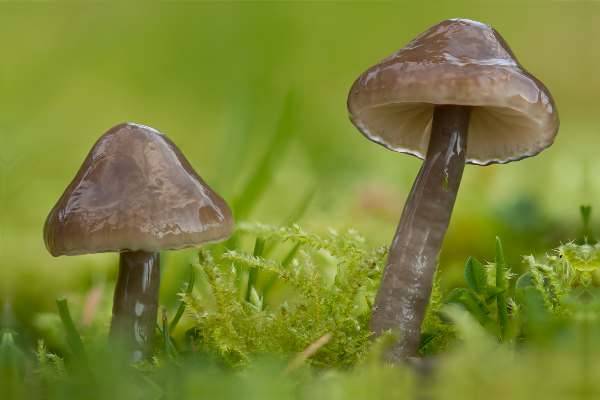
Culinary Notes
The slimy nature of this waxcap is a strong deterrent to those who farage for fungi to eat, and I have not come across any recipes for cooking Slimy Waxcaps - in fact most field guides record them as 'edibility unknown'. It's just as well, perhaps, because these shiny brownish waxcaps are far from common and even if collecting them made no difference to the viability of the underground mycelium it would certainly make it less likely that other people would be able to enjoy seeing them. Brown waxcaps - the Date Waxcap is another example - are far from being commonplace.
Reference Sources
Fascinated by Fungi, 2nd Edition, Pat O'Reilly 2016, reprinted by Coch-y-bonddu Books in 2022.
Fungi of Northern Europe, Volume 1 - The Genus Hygrocybe, David Boertmann, 2010.
British Mycological Society English Names for Fungi
Dictionary of the Fungi; Paul M. Kirk, Paul F. Cannon, David W. Minter and J. A. Stalpers; CABI, 2008
Taxonomic history and synonym information on these pages is drawn from many sources but in particular from the British Mycological Society's GB Checklist of Fungi.
Acknowledgements
This page includes pictures kindly contributed by Simon Harding and David Kelly.
Fascinated by Fungi. Back by popular demand, Pat O'Reilly's best-selling 450-page hardback book is available now. The latest second edition was republished with a sparkling new cover design in September 2022 by Coch-y-Bonddu Books. Full details and copies are available from the publisher's online bookshop...
